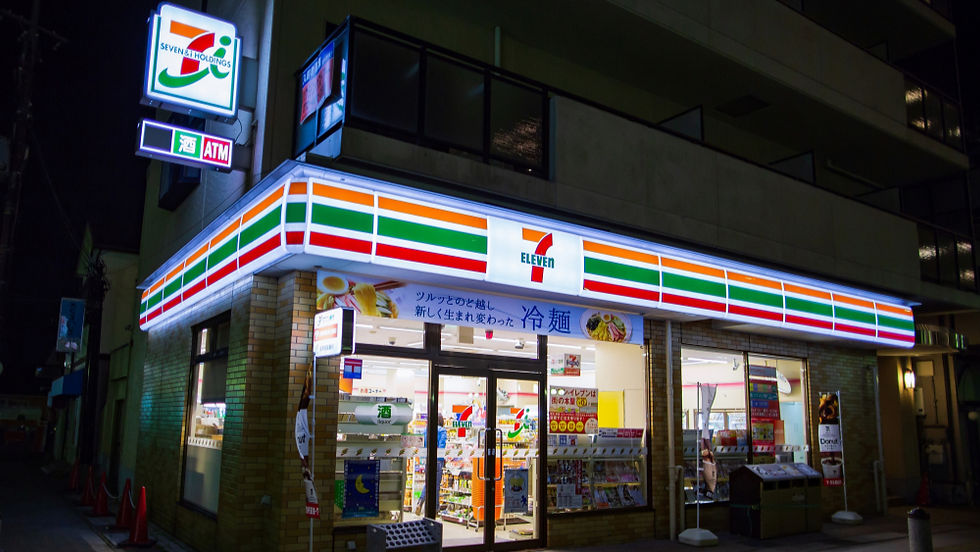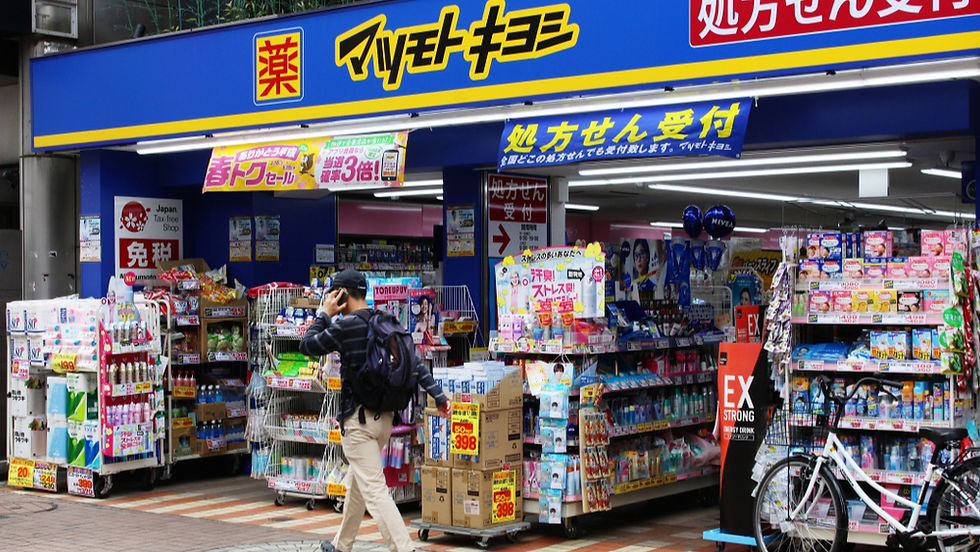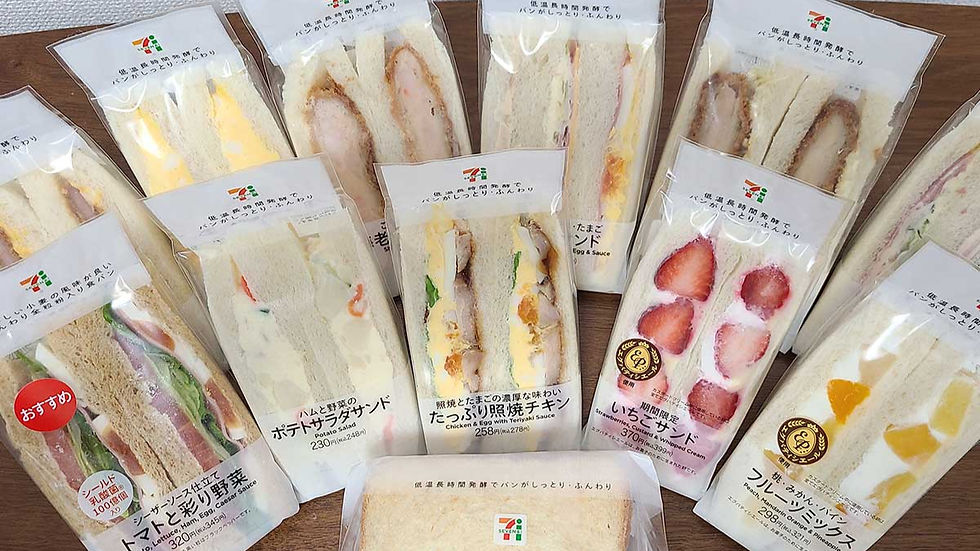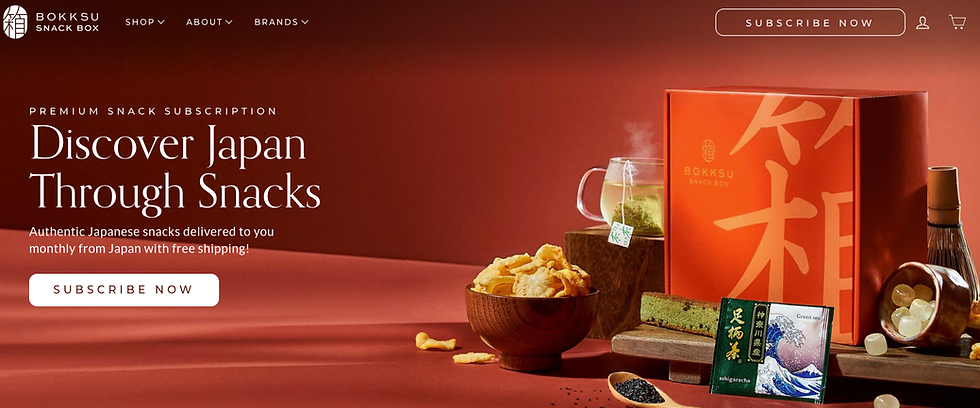
Japan's food and beverage industry is a complex and dynamic ecosystem that presents challenges and opportunities for businesses looking to enter or expand in this market. The Japanese food and beverage sector will be worth a projected $411 billion USD in 2024, making it one of the world's most lucrative and sophisticated markets. This comprehensive guide will explore the unique characteristics, major players, and emerging trends shaping this vibrant industry.
Table of Contents
What is the size of Japan's food and beverage market in 2024?
What are the major retail channels in Japan's food and beverage market?
What is driving innovation in Japan's food and beverage market?
How do convenience stores impact Japan's food and beverage market?
What opportunities exist for foreign brands in Japan's food and beverage market?
The Structure of Japan's Food and Beverage Market
To truly understand the Japanese food and beverage landscape, it's essential to break down its structure and identify the key players that dominate the market. The industry is primarily divided into four major retail channels, each with its own significance and market share:
1. GMS, Supermarkets, and Discount Stores (49% market share)
2. Convenience Stores (18% market share)
3. Other Modern Trade Channels (14% market share)
4. Traditional and Specialty Retailers (19% market share)
GMS, Supermarkets, and Discount Stores: The Retail Giants

General Merchandise Stores, supermarkets, and discount stores collectively account for Japan's largest food and beverage sales share, commanding 49% of the market. These channels are crucial for several reasons:
• Wide Product Range: They offer extensive food and beverage products, from fresh produce to packaged goods.
• Price Competitiveness: Discount stores, especially, attract price-conscious consumers.
• One-Stop Shopping: Many Japanese consumers prefer the convenience of purchasing all their groceries in one location.
Contact ULPA for Help Launching
Your Product in Japan
Interestingly, food and beverage sales constitute an average of 71% of total sales for these channels, with some regional supermarkets seeing figures as high as 95%. This underscores the importance of food and beverage products in driving overall retail performance.
The Convenience Store Revolution: Small Spaces, Big Impact

With an astounding 57,000 stores nationwide, convenience stores, or "Konbini" as they're known in Japan, have become an integral part of the country's infrastructure. Accounting for 18% of food and beverage sales, konbini play a unique role in Japanese daily life:
• 24/7 Availability: Most konbini operate around the clock, catering to Japan's hardworking population and late-night culture.
• Small, Packaged Foods: Perfect for urban dwellers living in compact spaces and those with busy lifestyles.
• Fresh Food Focus: Ready-to-eat meals, bento boxes, and fresh sandwiches comprise a significant portion of konbini food sales.
Three major players dominate the convenience store sector:
7-Eleven
Family Mart
Lawson
Contact ULPA for Help Launching
Your Product in Japan
Together, 7-Eleven, Family Mart, and Lawson control approximately 90% of the convenience store market in Japan, creating a highly consolidated industry that's challenging for new entrants to penetrate. Food and beverage offerings comprise about 60% of total convenience store sales, with ultra-fresh products like rice balls, salads, and ready-to-eat meals leading the way. Focusing on fresh, convenient food options has been a key driver of Konbini's success in Japan.
Other Modern Trade Channels: Diversity in Retail

The remaining 14% of market share is attributed to other modern trade channels, which include:
• Drug Stores: Increasingly stocking food and beverage items, especially health-focused products.
• Online Retailers: E-commerce platforms selling groceries and speciality food items.
• Department Stores: Often featuring gourmet food halls and imported speciality products.
These diverse channels cater to specific consumer needs and preferences, adding depth and variety to Japan's food and beverage retail landscape.
Regional Retailers: The Local Heroes

Regional retailers, primarily local supermarkets and grocery stores, play a crucial role in Japan's food and beverage market. They account for approximately 33% of total food sales in the country and represent about 80% of all GMS/SM channel sales. What makes these regional players stand out?
• Focus on Freshness: They often have strong relationships with local producers, ensuring the freshest products.
• Local Preferences: Regional retailers are adept at catering to local tastes and seasonal demands.
• Innovation Drivers: Many regional chains are at the forefront of product development, creating private label brands and importing unique, value-added products.
Contact ULPA for Help Launching
Your Product in Japan
This focus on local preferences and innovation presents a unique opportunity for exporters looking to enter the Japanese market through regional retail partnerships.
Emerging Trends and Challenges in Japan's Food and Beverage Market
Japan's food and beverage sector is undergoing a profound transformation. This culinary revolution is reshaping the industry and the essence of Japanese food culture. Let's dive into the key trends and challenges in this gastronomic landscape, offering insights for industry players and food enthusiasts alike.
The Silver Tsunami: How Japan's Aging Population is Redefining Food Innovation

Japan's demographic shift is perhaps the most significant force shaping its food and beverage landscape. With the world's highest proportion of elderly citizens - a staggering 30% will be 65 or older by 2030 - the industry is adapting innovatively and heartwarmingly.
Gone are the days when "elder-friendly" meant bland purées and uninspiring meal replacements. Today, we're witnessing the rise of "Functional Foods 2.0" - a movement that's as much about gastronomic delight as nutrition. Take, for instance, Kewpie's groundbreaking "Tender Menu" series. This isn't your grandmother's soft food; it's a gourmet experience that looks and tastes like regular meals but is specially designed for easy swallowing. Imagine savouring a perfectly textured hamburger steak or indulging in sushi, even if you have difficulty swallowing. It's not just food; it's dignity and joy served on a plate.
Contact ULPA for Help Launching
Your Product in Japan
As Japanese households shrink (averaging just 2.27 people per household in 2020), food manufacturers are ingeniously reimagining portion sizes. Meiji's "Perfect Plus" milk is a prime example of this nutrient-dense revolution. A mere 100ml bottle - perfect for smaller appetites - packs the calcium punch of 1.5 glasses of regular milk. It's a small package with enormous nutritional impact, tailored for an ageing population with evolving dietary needs.
Perhaps most fascinating is the growing concept of "food as medicine" in Japan. This isn't about bland health foods; it's about delicious, everyday products that promise to enhance longevity. Yakult's "1000" probiotic drink exemplifies this trend. Each tiny bottle contains a mind-boggling 100 billion live bacteria, marketed for digestive health and as part of a comprehensive longevity-promoting lifestyle. It's a testament to Japan's holistic approach to health and nutrition, where every bite and sip is an opportunity for wellness.
The Tech Revolution: AI, IoT, and the Future of Food Retail in Japan

In a country renowned for its technological prowess, it's no surprise that Japan's food and beverage sector is at the forefront of the tech revolution. However, how technology transforms the industry goes far beyond what most of us could have imagined even a decade ago.
Let's start with the humble convenience store, or "konbini" - a staple of Japanese urban life. These aren't just places to grab a quick snack anymore; they're becoming high-tech food management laboratories. Take Lawson, one of Japan's major convenience store chains. They've partnered with AI firm DataRobot to create a system that accurately predicts sales of fresh food items. The result? A reduction in food waste by up to 40%. It's a win-win situation: less environmental waste, fresher food for consumers, and improved profitability for the business. This AI-powered inventory management is just the tip of the iceberg in Japan's retail tech revolution.
Contact ULPA for Help Launching
Your Product in Japan
But why stop at AI-managed inventory when robots can prepare and serve your food? Welcome to Henna Cafe in Tokyo, where the future of dining is now. Here, robot chefs expertly prepare okonomiyaki (Japanese savoury pancakes) while robot waiters take orders and serve customers in multiple languages. It's not just a gimmick; it's a glimpse into a future where automation and AI could help address Japan's labour shortage while providing a unique dining experience.
Blockchain technology is making waves in food safety and traceability. Companies leverage blockchain to create an unbroken information chain from farm to table. Imagine picking up a package of Wagyu beef and tracing its entire journey—from the farm where the cow was raised to the processing facility to the store shelf—all with a simple smartphone scan. It's about satisfying curiosity and building trust and transparency in the food supply chain.
The Convenience Conundrum: Fresh, Fast, and Fantastic

In Japan, convenience has evolved far beyond the simple grab-and-go model. Today, it's all about offering fresh, high-quality food options that rival restaurant meals, available momentarily. This shift has sparked what can only be described as a culinary arms race among retailers, elevating the humble convenience store to gourmet heights.
At the forefront of this revolution is 7-Eleven, a name synonymous with convenience worldwide but taken to new levels in Japan. Their collaboration with Michelin-starred chef Hiroyuki Hiramatsu has brought items like foie gras sauce pasta to Konbini shelves. Yes, you read that right - foie gras in a convenience store. This isn't just about offering fancier options; it's about fundamentally changing perceptions of what convenience food can be. When you can pick up a chef-curated, restaurant-quality meal at 3 AM from your local 7-Eleven, the lines between convenience and gourmet start to blur.
Contact ULPA for Help Launching
Your Product in Japan
Meal kit services are undergoing a gourmet makeover for those who prefer to cook at home but are short on time. Companies like Oisix Ra Daichi are reimagining the meal kit, moving away from simple, pre-portioned ingredients to offering gourmet, locally sourced components paired with recipes developed by top chefs. These aren't just convenient; they're culinary experiences in a box, allowing time-poor but discerning consumers to create restaurant-quality meals in their kitchens.
This trend towards "convenient gourmet" reflects Japan's unique food culture, which prizes quality and presentation but increasingly demands speed and accessibility. It's a delicate balance, but one that Japanese retailers are mastering with impressive creativity.
Opportunities for Foreign Brands and Exporters
Despite its complexities, Japan's food and beverage market offers significant opportunities for foreign brands and exporters:
Premium and Specialty Products

Japanese consumers often associate foreign products with high quality and uniqueness. There's a growing demand for:
Gourmet and Artisanal Foods: These come mainly from countries with strong culinary reputations, such as Italy or France. For example, Italian truffles and French cheeses are highly sought after.
Organic and Natural Products: As health consciousness grows, so does interest in organic options. Organic quinoa and chia seeds from South America are gaining popularity.
Functional Foods: Products with specific health benefits are increasingly popular. New Zealand Manuka honey, known for its antibacterial properties, has seen growing demand.
Convenience and Ready-to-Eat Options

With busy lifestyles and smaller households, there's a growing demand for:
Individually Packaged Portions: Single-serve or small-portion products cater to solo diners and small families. Mini cheese wheels from Europe are gaining traction.
Heat-and-Eat Meals: High-quality, pre-prepared meals that can be quickly reheated. Gourmet frozen pizzas from Italy are becoming popular.
Healthy Snacks: Nutritious, on-the-go options for health-conscious consumers. American trail mix and protein bars are increasingly common.
Regional Supermarket Partnerships

Regional supermarkets are often more open to stocking unique, imported products. Building relationships with these retailers can be an effective entry strategy. There's a growing demand for:
Local Specialties: Regional supermarkets are keen to offer unique products from specific regions. For instance, there's increasing interest in speciality hot sauces from the American South or authentic Mexican salsas.
Ethically Sourced Products: Fair trade coffee from South America and ethically produced chocolate from Africa are gaining shelf space in regional supermarkets.
International Seasonal Items: Products associated with foreign holidays, like German Christmas stollen or American pumpkin pie filling, are popular during specific seasons.
E-commerce Platforms

Online marketplaces provide a low-barrier entry point for foreign brands to test the Japanese market without significant upfront investment. There's particular demand for:
Niche Gourmet Products: Hard-to-find international ingredients, such as specific spice blends or exotic fruits, are popular on e-commerce platforms.
International Snack Boxes: Subscription services offering curated selections of foreign snacks are gaining popularity among younger consumers.
Speciality Dietary Products: Gluten-free, keto-friendly, or vegan products from abroad, which may not be widely available in physical stores, see strong online demand.
Health and Wellness Products

With an ageing population and increasing health consciousness, there's a growing demand for:
Functional Beverages: Drinks fortified with vitamins, minerals, or other health-promoting ingredients. Kombucha from the U.S. is gaining popularity.
Low-Sugar and Low-Sodium Options: Products catering to dietary restrictions or health concerns are in demand. Sugar-free cookies and low-sodium snacks from Europe are in demand.
Beauty-From-Within Products: Foods and beverages that claim to improve skin health or appearance are trending. Collagen drinks from the U.S. and "beauty chocolates" from Switzerland are popular.
Contact ULPA for Help Launching
Your Product in Japan
Five Key Challenges to Navigate in the Japan F&B Marketplace
While Japan's food and beverage market offers significant opportunities, foreign brands should be aware of these potential challenges:
Regulatory Compliance
Japan's food safety and labelling regulations are notoriously strict. The positive list system for agricultural chemicals and limited approved food additives can necessitate product reformulation. Partnering with local regulatory experts is often crucial for successful market entry.
Packaging Preferences
Due to limited storage space and smaller household sizes, Japanese consumers favour smaller, often individual-sized packaging. High-quality, aesthetically pleasing packaging is also valued. Consider developing Japan-specific packaging that balances practicality with visual appeal.
Contact ULPA for Help Launching
Your Product in Japan
Cultural Sensitivity
Local tastes and cultural norms significantly impact product success. For instance, Japanese consumers prefer less sweet and spicy flavours than Western markets. Subtle, informative marketing approaches often resonate better than aggressive sales pitches. Conduct thorough market research to guide product and marketing adaptations.
Distribution Complexities
Japan's multi-layered distribution system can be challenging to navigate, potentially impacting pricing and competitiveness. Building relationships with key players is crucial but can be time-consuming. Consider partnering with a reputable local distributor to navigate this complex landscape.
Competition
The Japanese F&B market is highly competitive, with domestic and international brands vying for shelf space. Japanese consumers are discerning and have high expectations for quality and innovation. To stand out, focus on clear, unique selling propositions and consider targeting niche markets initially before expanding.
A Market of Opportunity and Innovation
Japan's multi-billion dollar food and beverage market is a complex ecosystem characterized by innovation, quality, and an intricate balance between tradition and modernity. While challenges exist, the opportunities for growth and success are substantial for those willing to invest the time and resources to understand and adapt to this unique market. From the dominance of convenience stores in urban areas to the innovation driven by regional supermarkets and the growing e-commerce sector to the increasing demand for health-focused products. For foreign brands and exporters, success in this market requires a nuanced understanding of local preferences, a commitment to quality, and the flexibility to adapt to changing consumer needs.
As Japan grapples with demographic shifts, technological advancements, and evolving consumer preferences, the food and beverage industry will continue to transform. Those anticipating and responding to these changes will be well-positioned to thrive in one of the world's most sophisticated and lucrative food and beverage markets.
FAQ Section
What is the size of Japan's food and beverage market in 2024?
Japan's food and beverage market is a dynamic and lucrative sector. As of 2024, it will be worth a projected $411.6 billion USD, making it one of the largest and most sophisticated markets globally.
What are the major retail channels in Japan's food and beverage market?
Japan's food and beverage market is dominated by several key retail channels: General Merchandise Stores, supermarkets, and discount stores (49% market share), convenience stores (18%), other modern trade channels such as drug stores and online retailers (14%), and traditional and speciality retailers (19%).
What is driving innovation in Japan's food and beverage market?
The ageing population drives innovation in Japan's food and beverage market, leading to the development of "functional foods" tailored to elderly consumers. Additionally, technological advancements such as AI and IoT are revolutionising food retail, focusing on reducing waste, improving food safety, and offering gourmet convenience options.
How do convenience stores impact Japan's food and beverage market?
Convenience stores, known as "Konbini" in Japan, significantly impact the food and beverage market, accounting for 18% of total sales. They are notable for their 24/7 availability, focus on fresh, ready-to-eat meals, and dominance by three major players: 7-Eleven, Family Mart, and Lawson.
What opportunities exist for foreign brands in Japan's food and beverage market?
Opportunities for foreign brands in Japan include offering premium and speciality products, convenience and ready-to-eat options, partnerships with regional supermarkets, and leveraging e-commerce platforms. Key demand areas include gourmet foods, organic products, functional foods, and health-focused items.
Ready to learn how to launch, integrate and scale your business in Japan?
Download our intro deck and contact ULPA today to understand how we will help your company learn the rules of business in Japan, and then redefine those rules.
Let The Adventure Begin.

コメント